- Sorry, this product is unavailable.
-
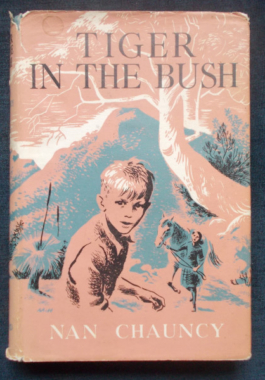 For eleven-year-old Badge the world is bounded by the high ridges that enclose his valley home, deep in the heart of Tasmania. He delights in the wild life that surrounds him, and cares little for the world Outside. But one day visitors arrive from Outside - Russ, a splendid cousin from America, and his friend Dr Heftman, who have come to study the local natural history: and they bring a new interest into Badge's life. He had once been shown one of the country's rarest animals, the nearly extinct Tasmanian tiger, coming to a pool to drink: and he had promised never to reveal its whereabouts. But, carried away by the admiration of his cousin, he tells the secret: and then faces a terrible dilemma, for now Russ will want to carry the rare animal away from the free life of the wilds into captivity.
For eleven-year-old Badge the world is bounded by the high ridges that enclose his valley home, deep in the heart of Tasmania. He delights in the wild life that surrounds him, and cares little for the world Outside. But one day visitors arrive from Outside - Russ, a splendid cousin from America, and his friend Dr Heftman, who have come to study the local natural history: and they bring a new interest into Badge's life. He had once been shown one of the country's rarest animals, the nearly extinct Tasmanian tiger, coming to a pool to drink: and he had promised never to reveal its whereabouts. But, carried away by the admiration of his cousin, he tells the secret: and then faces a terrible dilemma, for now Russ will want to carry the rare animal away from the free life of the wilds into captivity. -
 Book III of The Saint vs Crown Prince Rudolph. The Saint had decided to turn over a new leaf. But he hadn't reckoned with Prince Rudolf - nor with his old adversary's hankering for diamonds! Why would a man as rich as Rudolph care about the comparatively small value of the Montenegrian Crown jewels?
Book III of The Saint vs Crown Prince Rudolph. The Saint had decided to turn over a new leaf. But he hadn't reckoned with Prince Rudolf - nor with his old adversary's hankering for diamonds! Why would a man as rich as Rudolph care about the comparatively small value of the Montenegrian Crown jewels? -
 Since everything old is new again, you can liven up your next 'do' with novel party games from the fabulous Fifties. Includes pencil and paper games, word games, team games, treasure hunts and mimes. Good clean fun all round.
Since everything old is new again, you can liven up your next 'do' with novel party games from the fabulous Fifties. Includes pencil and paper games, word games, team games, treasure hunts and mimes. Good clean fun all round. -

 A narration of the events of the Biblical Exodus from Egypt told from the perspective of Ana, the scribe: This is the story of certain of the days that I, the scribe Ana, son of Meri, lived through, here upon this earth...I tell of Merapi - who was named Moon of Israel! - and of her people, the Hebrews, who dwelt for long in Egypt and departed thence - having paid us back in loss and shame for all the good and ill we gave them. And now I - the King's Companion, the great scribe, the beloved of the Pharaohs who have lived beneath the sun with me - tell of the war between the gods of Egypt and the god of Israel... I write of these matters now when I am very old in the reign of Rameses, before death takes me...
A narration of the events of the Biblical Exodus from Egypt told from the perspective of Ana, the scribe: This is the story of certain of the days that I, the scribe Ana, son of Meri, lived through, here upon this earth...I tell of Merapi - who was named Moon of Israel! - and of her people, the Hebrews, who dwelt for long in Egypt and departed thence - having paid us back in loss and shame for all the good and ill we gave them. And now I - the King's Companion, the great scribe, the beloved of the Pharaohs who have lived beneath the sun with me - tell of the war between the gods of Egypt and the god of Israel... I write of these matters now when I am very old in the reign of Rameses, before death takes me... -
 The legendary Robin Hood will never go out of style - he fights for the poor and for justice. This collection traces him from the day of his outlawry, his meeting with Little John, the forming of his band of men of like mind, outlaws all; the embarrassment of the Sherrif and the eventual return of King Richard. Illustrations by R.C. Smith.
The legendary Robin Hood will never go out of style - he fights for the poor and for justice. This collection traces him from the day of his outlawry, his meeting with Little John, the forming of his band of men of like mind, outlaws all; the embarrassment of the Sherrif and the eventual return of King Richard. Illustrations by R.C. Smith. -

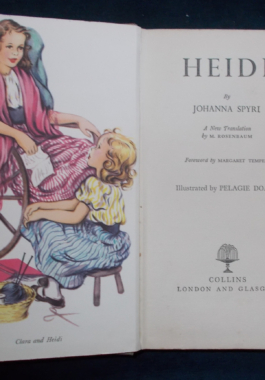
Heidi: Johanna Spyri
$9.00First published in 1880, here is Heidi's story - a young Swiss girl whose parents' sudden death leaves her to be brought up by her Aunt Dete - a hard-working woman who loves Heidi, but does not have the time or resources to look after a child in busy Frankfurt. She leaves Heidi with Heidi's grandfather, who lives in the Swiss mountains. The lonely, embittered old man lives like a hermit on the mountain-top and has nothing to do with the people in the village below. Known to all as “Alm-uncle”, Heidi's grandfather is good-hearted but mistrustful of the villagers. He refuses to send Heidi to school and allows her to roam the pastures with a mischeivous young goat herder, Peter. They become good friends but events take a turn when Aunt Dete decides that Heidi must stay in Frankfurt and learn to earn a living as a companion to a rich invalid child, Clara, and soon learns to read and write along with the little girl. The city begins to take its toll on the young Heidi and she becomes ill and depressed, longing for the open spaces. How Heidi returns to her beloved mountains, reforms her crotchety old grandfather and helps Clara regain her health forms the rest of this perennial classic. With illustrations in colour and black and white by Pelagie Doane. -

 Geppetto is a lonely woodcarver who makes a boy puppet and wishes, with all his might, that the puppet was alive. As Geppetto sleeps, Pinocchio is given life by the Blue Fairy. There's a catch, though. Pinocchio is alive, but he won't be a real boy until he proves himself and to help him, the Cricket will be his conscience. In the morning, Geppetto is thrilled to see that his wish has come true and he does what any father would do. He sends Pinocchio off to school - and into trouble. Pinocchio must learn to be honest, brave and to think of others before he can become a real human boy. He has to learn exactly what it means to be human. Will he learn in time? With one colour plate and fantastic line drawings by A.H. Watson.
Geppetto is a lonely woodcarver who makes a boy puppet and wishes, with all his might, that the puppet was alive. As Geppetto sleeps, Pinocchio is given life by the Blue Fairy. There's a catch, though. Pinocchio is alive, but he won't be a real boy until he proves himself and to help him, the Cricket will be his conscience. In the morning, Geppetto is thrilled to see that his wish has come true and he does what any father would do. He sends Pinocchio off to school - and into trouble. Pinocchio must learn to be honest, brave and to think of others before he can become a real human boy. He has to learn exactly what it means to be human. Will he learn in time? With one colour plate and fantastic line drawings by A.H. Watson. -
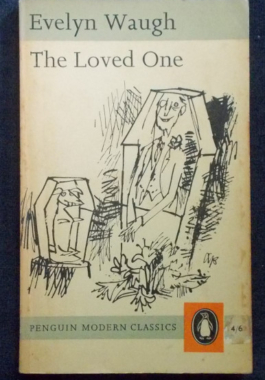 First published in 1948, this book caused a sensation. Waugh, on a visit to California, was fascinated by the elaborate graveyards, pet cemeteries and overblown rituals of death. It inspired him to write this witty 'tragedy' of Anglo-American manners set against the background of embalming rooms and incinerators.
First published in 1948, this book caused a sensation. Waugh, on a visit to California, was fascinated by the elaborate graveyards, pet cemeteries and overblown rituals of death. It inspired him to write this witty 'tragedy' of Anglo-American manners set against the background of embalming rooms and incinerators. -
 Inimitable (definition): that which defies imitation. For years, Mikes wrote witty articles and books on every aspect of British life, pricking pomposity and praising decency. Contains chapters on how to avoid travelling, wine snobbery, television, how to be class conscious and how to remain poor. Mikes may have emigrated from Hungary - but he wouldn't live anywhere else. Illustrated by Nicholas Bentley.
Inimitable (definition): that which defies imitation. For years, Mikes wrote witty articles and books on every aspect of British life, pricking pomposity and praising decency. Contains chapters on how to avoid travelling, wine snobbery, television, how to be class conscious and how to remain poor. Mikes may have emigrated from Hungary - but he wouldn't live anywhere else. Illustrated by Nicholas Bentley. -
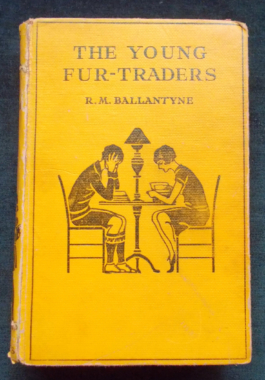 This is the life of a Canadian trapper in the early 1800s. Charlie Kennedy lives in the arctic colony known as the Red River Settlement with Indians, Scotsmen, and French-Canadian settlers. His father, an old fur trader, hopes to convince his son to become a clerk by recounting the dangers of the trapper’s life, but the stories only inspire the boy more to explore the vast Canadian wilderness. A variety of circumstances lead to Charlie trapping in the vast forests, on a journey with voyagers down perilous rivers, and surviving all sorts of scrapes and adventures with a new acquaintance, Jacques Caradoc, and an Indian named Red Feather. Many of Charlie’s exploits are taken from the real-life experiences of R.M. Ballantyne’s own time with the Hudson Bay Company in Canada. Just as Ballantyne had done, Charlie learns to shoot mercury from his rifle through a two inch board in 39 degree below zero temperatures. Discover the strenuous and vigorous life of a trapper through the eyes of Charlie and his friends.
This is the life of a Canadian trapper in the early 1800s. Charlie Kennedy lives in the arctic colony known as the Red River Settlement with Indians, Scotsmen, and French-Canadian settlers. His father, an old fur trader, hopes to convince his son to become a clerk by recounting the dangers of the trapper’s life, but the stories only inspire the boy more to explore the vast Canadian wilderness. A variety of circumstances lead to Charlie trapping in the vast forests, on a journey with voyagers down perilous rivers, and surviving all sorts of scrapes and adventures with a new acquaintance, Jacques Caradoc, and an Indian named Red Feather. Many of Charlie’s exploits are taken from the real-life experiences of R.M. Ballantyne’s own time with the Hudson Bay Company in Canada. Just as Ballantyne had done, Charlie learns to shoot mercury from his rifle through a two inch board in 39 degree below zero temperatures. Discover the strenuous and vigorous life of a trapper through the eyes of Charlie and his friends. -

 The third of this author's series on diplomatic life in China which tells how and why he came to make his home in China. He claims he finds it difficult to explain and feels that he may not be believed...He tried writing it as if all events had happened to someone else, but found the result unsatisfactory, as it was too absurd and inconsequent! Yet, he says, the story has a moral: the absurdity and inconsequence fascinated him and made him wish to settle in a country where life moved on lines so delightfully irrelevant.
The third of this author's series on diplomatic life in China which tells how and why he came to make his home in China. He claims he finds it difficult to explain and feels that he may not be believed...He tried writing it as if all events had happened to someone else, but found the result unsatisfactory, as it was too absurd and inconsequent! Yet, he says, the story has a moral: the absurdity and inconsequence fascinated him and made him wish to settle in a country where life moved on lines so delightfully irrelevant. -
 Adventures as the yacht, Wanderer, sailing around the South Seas looking for treasure. wanders into an atomic testing area of the Pacific. Illustrated by S. Fezzard. The author, Percy Francis Westerman (1876 - 1959) was a prolific author of children's literature, many of his books adventures with military themes. His writing career allegedly began with a sixpence bet made with his wife that he could write a better story than the one he was reading to his son, who was at the time ill with chickenpox. His first book for boys, 'A Lad of Grit', was published in 1908. During the 1930s Westerman was voted the most popular author of stories for boys, having published over 170 books.
Adventures as the yacht, Wanderer, sailing around the South Seas looking for treasure. wanders into an atomic testing area of the Pacific. Illustrated by S. Fezzard. The author, Percy Francis Westerman (1876 - 1959) was a prolific author of children's literature, many of his books adventures with military themes. His writing career allegedly began with a sixpence bet made with his wife that he could write a better story than the one he was reading to his son, who was at the time ill with chickenpox. His first book for boys, 'A Lad of Grit', was published in 1908. During the 1930s Westerman was voted the most popular author of stories for boys, having published over 170 books. -

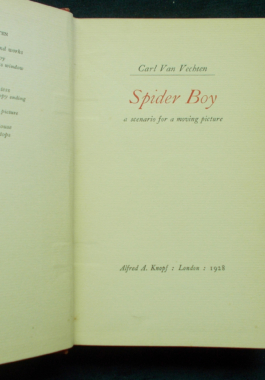 Playwright Ambrose Deacon suffers from acute diffidence. The success of his one-hit Broadway play sends him to Hollywood where he meets moving picture moguls Herbert Ringrose and Ben Griesheimer and the screen goddess Imperia Starling. This is the start of his extraordinary adventures in Hollywood and he discovers that he doesn't know how to say No. One of the first comic novels about life in Hollywood. Carl Van Vechten (1880-1964) was an American novelist and was one of the most influential literary figures of the 1910s and 1920s. He began his career in journalism as a reporter and later worked as its Paris correspondent. His first novel, Peter Whiffle (1922) is a first-person account of the salon and bohemian culture of New York and Paris, clearly drawn from Van Vechten's own experiences, and was immensely popular.
Playwright Ambrose Deacon suffers from acute diffidence. The success of his one-hit Broadway play sends him to Hollywood where he meets moving picture moguls Herbert Ringrose and Ben Griesheimer and the screen goddess Imperia Starling. This is the start of his extraordinary adventures in Hollywood and he discovers that he doesn't know how to say No. One of the first comic novels about life in Hollywood. Carl Van Vechten (1880-1964) was an American novelist and was one of the most influential literary figures of the 1910s and 1920s. He began his career in journalism as a reporter and later worked as its Paris correspondent. His first novel, Peter Whiffle (1922) is a first-person account of the salon and bohemian culture of New York and Paris, clearly drawn from Van Vechten's own experiences, and was immensely popular. -
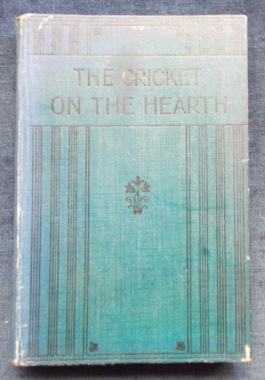 Dickens wrote five Christmas Books in all, the first and best known being A Christmas Carol. The Cricket On The Hearth is third in the series but probably the second favourite in line. The Cricket of the title is a barometer of life at the home of John Peerybingle and his much younger wife, Dot. When things go well, the cricket on the hearth chirps; it is silent when there is sorrow. Tackleton, a jealous old man, poisons John's mind about Dot. The cricket, a creature long credited in many cultures with supernatural abilities, has his work cut out for him to detoxify good John's mind of the horrible suspicions the repulsive old Tackleton has sown. Illustrated by Gordon Robinson.
Dickens wrote five Christmas Books in all, the first and best known being A Christmas Carol. The Cricket On The Hearth is third in the series but probably the second favourite in line. The Cricket of the title is a barometer of life at the home of John Peerybingle and his much younger wife, Dot. When things go well, the cricket on the hearth chirps; it is silent when there is sorrow. Tackleton, a jealous old man, poisons John's mind about Dot. The cricket, a creature long credited in many cultures with supernatural abilities, has his work cut out for him to detoxify good John's mind of the horrible suspicions the repulsive old Tackleton has sown. Illustrated by Gordon Robinson. -

 A foreign bachelor in the Diplomatic Service living in Peking's Chinese quarter during the years between 1908 and 1920 finds himself guardian to the young daughter of an Italian railway worker. Through his stewardship, he catches a glimpse of an entirely different side of life. As Kuniang grows up, his feelings for her change, and he must compete with a motley cast of characters for her attentions. These include a shadowy former mistress of Rasputin, a flamboyant American fashion designer, Red Russians, White Russians and Radishes (Red outside and White inside) and an English millionaire. But when Kuniang unwittingly falls under a form of Eastern hypnosis, a terrifying vision threatens their prospects. Set against the mysterious Eastern backdrop of Peking in the early twentieth century, The Maker of Heavenly Trousers is a charming, possibly autobiographical - and at times tragic - story of love and family.
A foreign bachelor in the Diplomatic Service living in Peking's Chinese quarter during the years between 1908 and 1920 finds himself guardian to the young daughter of an Italian railway worker. Through his stewardship, he catches a glimpse of an entirely different side of life. As Kuniang grows up, his feelings for her change, and he must compete with a motley cast of characters for her attentions. These include a shadowy former mistress of Rasputin, a flamboyant American fashion designer, Red Russians, White Russians and Radishes (Red outside and White inside) and an English millionaire. But when Kuniang unwittingly falls under a form of Eastern hypnosis, a terrifying vision threatens their prospects. Set against the mysterious Eastern backdrop of Peking in the early twentieth century, The Maker of Heavenly Trousers is a charming, possibly autobiographical - and at times tragic - story of love and family. -
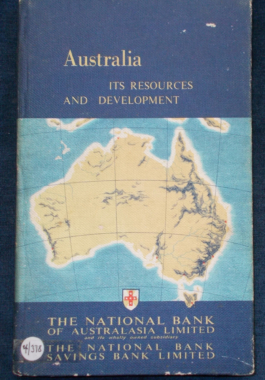 A real curio for history buffs and those who collect bank memorabilia. Remember when banks did give away all sorts of great things? Really good money boxes that you couldn't break into, and recordings of the Skippy theme song? The National Bank of Australasia Limited with its wholly-owned subsidiary the National Bank Savings Bank Limited offered this little volume covering all things resource and development: the Industrial Pattern of the rural, mineral, manufacturing and basic industries in each state making a special note of each state's particular strengths as well as Papua New Guinea; Water Resource, Transport and Power are also covered.
A real curio for history buffs and those who collect bank memorabilia. Remember when banks did give away all sorts of great things? Really good money boxes that you couldn't break into, and recordings of the Skippy theme song? The National Bank of Australasia Limited with its wholly-owned subsidiary the National Bank Savings Bank Limited offered this little volume covering all things resource and development: the Industrial Pattern of the rural, mineral, manufacturing and basic industries in each state making a special note of each state's particular strengths as well as Papua New Guinea; Water Resource, Transport and Power are also covered. -
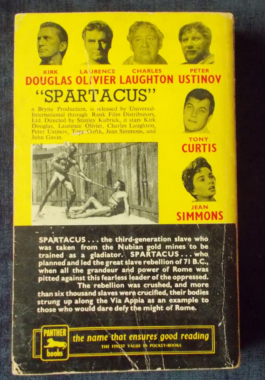

Spartacus: Howard Fast
$20.00Spartacus, the third generation slave who was taken from the Nubian gold mines and trained as a gladiator...He planned and led the great slave rebellion of 71 B.C. against the might of Rome. The rebellion was crushed and more than six thousand slaves were crucified as an example to those who would defy the power of Rome. Cover illustration shows an artist's rendition of Kirk Douglas in the role of Spartacus in the all-star film. -
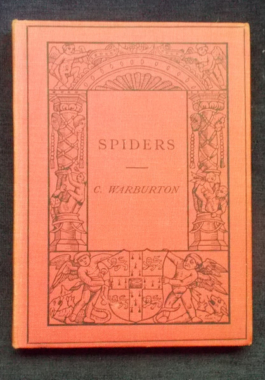
Spiders: C. Warburton
$15.00A fabulous pocket guide which covers a great range of spider-topics. After defining a spider and an examination of their mental powers, the author examines water spiders, crab-spiders, wolf-spiders, jumping spiders, theraphosid spiders, purring spiders(!) and the enemies of spiders. With illustrations.
-
 Includes chapters on: Cause and Origin of Migration; Routes; The Height and Speed of Migration Flight; The Distances Travelled by Birds; Migration of Weather; The Perils of Migration; Early Ideas of Migration. A fascinating work on the topic without being wordy. This book was part of a 1/- series published by the Cambridge University Press on Science and Literature intended to cover a broad range of subjects, written by experts for the interested reader seeking easily accessible, sound knowledge.
Includes chapters on: Cause and Origin of Migration; Routes; The Height and Speed of Migration Flight; The Distances Travelled by Birds; Migration of Weather; The Perils of Migration; Early Ideas of Migration. A fascinating work on the topic without being wordy. This book was part of a 1/- series published by the Cambridge University Press on Science and Literature intended to cover a broad range of subjects, written by experts for the interested reader seeking easily accessible, sound knowledge. -
 Mikes, Hungarian immigrant to Britain, was always bewildered by the English and their customs. He took it in stride - eventually - and began his observations of British life and thence onward to encompass the rest of the world. He realises that people are not only funny, but they're at their funniest when trying to be serious. Mikes went to the United Nations and found them all being hilariously serious!
Mikes, Hungarian immigrant to Britain, was always bewildered by the English and their customs. He took it in stride - eventually - and began his observations of British life and thence onward to encompass the rest of the world. He realises that people are not only funny, but they're at their funniest when trying to be serious. Mikes went to the United Nations and found them all being hilariously serious! -
 Spike Milligan had published volumes of humorous and children's poetry before the 1970s, but Small Dreams of a Scorpion is the first volume to feature some of his most personal and painful musings: partly on his own bouts of clinical depression and hospitalisation; partly about some of his darkest moments as a soldier in World War II; and also about some of the terrible moments of post-war world history and his reactions to them - the Korean and Vietnam conflicts, the Aberfan school disaster and the assassination of Robert Kennedy. Illustrated by Spike and Laura Milligan.
Spike Milligan had published volumes of humorous and children's poetry before the 1970s, but Small Dreams of a Scorpion is the first volume to feature some of his most personal and painful musings: partly on his own bouts of clinical depression and hospitalisation; partly about some of his darkest moments as a soldier in World War II; and also about some of the terrible moments of post-war world history and his reactions to them - the Korean and Vietnam conflicts, the Aberfan school disaster and the assassination of Robert Kennedy. Illustrated by Spike and Laura Milligan. -
 Three men on the run take Petra Gwinson and her sick mother as hostages. A nightmare journey ends in a tiny outback settlement in Australia's northern Queensland. The robbers are plagued by setbacks as everyone plots against them. The stranded men become more desperate and finally, the old blind Aboriginal Narli wreaks revenge as the men, in a frightening chase on a stormy night, fight for survival.
Three men on the run take Petra Gwinson and her sick mother as hostages. A nightmare journey ends in a tiny outback settlement in Australia's northern Queensland. The robbers are plagued by setbacks as everyone plots against them. The stranded men become more desperate and finally, the old blind Aboriginal Narli wreaks revenge as the men, in a frightening chase on a stormy night, fight for survival. -
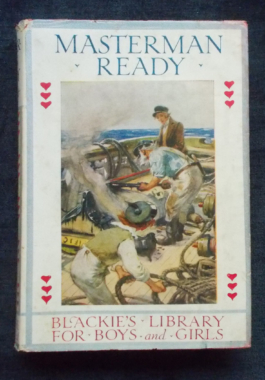 The Seagrave family are returning to New South Wales on board the Pacific when a storm strikes, wrecking the ship. The crew escape in a lifeboat, abandoning the passengers to their fate. The Seagrave family, together with their young black female servant Juno, and the veteran sailor Masterman Ready, are shipwrecked on a desert island. The family learn to survive many obstacles, helped by Ready's long experience of life as a seaman and they keep faith that they will be rescued. One of the first historical adventures for younger readers, Marryat - a sailor of long experience - was annoyed that Wyss had portrayed being shipwrecked as a romantic adventure in his 1812 book The Swiss Family Robinson and he also disapproved of the ignorance regarding flora and fauna displayed by Wyss.
The Seagrave family are returning to New South Wales on board the Pacific when a storm strikes, wrecking the ship. The crew escape in a lifeboat, abandoning the passengers to their fate. The Seagrave family, together with their young black female servant Juno, and the veteran sailor Masterman Ready, are shipwrecked on a desert island. The family learn to survive many obstacles, helped by Ready's long experience of life as a seaman and they keep faith that they will be rescued. One of the first historical adventures for younger readers, Marryat - a sailor of long experience - was annoyed that Wyss had portrayed being shipwrecked as a romantic adventure in his 1812 book The Swiss Family Robinson and he also disapproved of the ignorance regarding flora and fauna displayed by Wyss. -
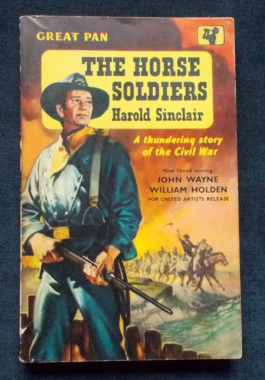 The story of the most daring cavalry operation of the American Civil War. A thousand silent horsemen hurry southwards on dusty Mississippi Roads - hungry, filthy and red-eyed with fatigue, too tired to speak. They are Marlowe's brigade, leaving behind them a trail of fire and chaos. The war between the States is in its third bitter year, and a rebel force fed by a single railroad artery holds out. Marlowe's brigade gets the job of cutting that lifeline - for good.
The story of the most daring cavalry operation of the American Civil War. A thousand silent horsemen hurry southwards on dusty Mississippi Roads - hungry, filthy and red-eyed with fatigue, too tired to speak. They are Marlowe's brigade, leaving behind them a trail of fire and chaos. The war between the States is in its third bitter year, and a rebel force fed by a single railroad artery holds out. Marlowe's brigade gets the job of cutting that lifeline - for good. -
 Phantom No. 7 . A palatial 200 ft yacht, The Sea Horse and a luxurious private island guarded by fierce dogs - all the property of the suave and charming Chris Danton. What is the source of his seemingly inexhaustible wealth? What is the grim secret behind the 'ageless' smile of the master of The Sea Horse ? The Phantom's sweetheart, beautiful Diana Palmer, innocently stumbles into Danton's web and finds herself caught up in an evil conspiracy from which she can be saved only by the power and ingenuity of the Phantom - The Ghost Who Walks...Cover art by George Wilson.
Phantom No. 7 . A palatial 200 ft yacht, The Sea Horse and a luxurious private island guarded by fierce dogs - all the property of the suave and charming Chris Danton. What is the source of his seemingly inexhaustible wealth? What is the grim secret behind the 'ageless' smile of the master of The Sea Horse ? The Phantom's sweetheart, beautiful Diana Palmer, innocently stumbles into Danton's web and finds herself caught up in an evil conspiracy from which she can be saved only by the power and ingenuity of the Phantom - The Ghost Who Walks...Cover art by George Wilson. -
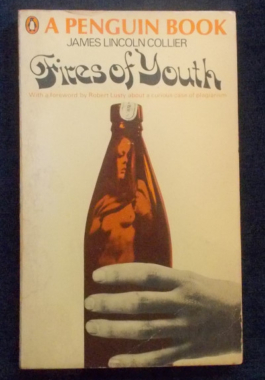 Danny's life is quite simple: doing odd jobs with his father to keep afloat, like painting barns or fixing plumbing, and then kicking back with a six-pack at the end of the day. His father believes that aAll women, young and old, are tramps and whores and no good, and are to be steered clear of. But living near a college, with college girls all over the town, Danny goes from complete innocence to jaded weariness as he experiences one after the other. He knows that Angie, the sophisticated, unstable student is trouble and she, with Danny's tough, vengeful father, make a strange triangle. Danny and Angie's affair works out for a while in a hole-and-corner sort of way. Then as the Welsh winter closes in, Angie gets more demanding - and Danny is faced with a cruel, impossible choice.
Danny's life is quite simple: doing odd jobs with his father to keep afloat, like painting barns or fixing plumbing, and then kicking back with a six-pack at the end of the day. His father believes that aAll women, young and old, are tramps and whores and no good, and are to be steered clear of. But living near a college, with college girls all over the town, Danny goes from complete innocence to jaded weariness as he experiences one after the other. He knows that Angie, the sophisticated, unstable student is trouble and she, with Danny's tough, vengeful father, make a strange triangle. Danny and Angie's affair works out for a while in a hole-and-corner sort of way. Then as the Welsh winter closes in, Angie gets more demanding - and Danny is faced with a cruel, impossible choice. -
 Seven more rounds of sparring, as Fletch and his fellow cons of Slade nick continue their struggle against the authority of Messrws MacKay and Barrowclough. Cover features the late great Ronnie Barker as Fletch.
Seven more rounds of sparring, as Fletch and his fellow cons of Slade nick continue their struggle against the authority of Messrws MacKay and Barrowclough. Cover features the late great Ronnie Barker as Fletch.


